Transforming a small space into a mini home theater lets you enjoy a true cinematic experience without leaving your home. A well-chosen display, thoughtful audio setup, and smart room arrangement are the foundation for creating an immersive environment even in compact areas. By focusing on the essentials and using clever design tips, you can achieve a comfortable setup that rivals larger theaters.
With the right equipment and attention to lighting and acoustics, your mini home theater provides a personalized escape for movies, games, and shows. You’ll discover that a few strategic choices make all the difference in sound quality, viewing comfort, and overall enjoyment.
Key Takeaways
- Choose display and audio equipment that suits your space and needs.
- Arrange seating and manage lighting for comfort and immersion.
- Enhance your setup’s atmosphere with creative details and design.
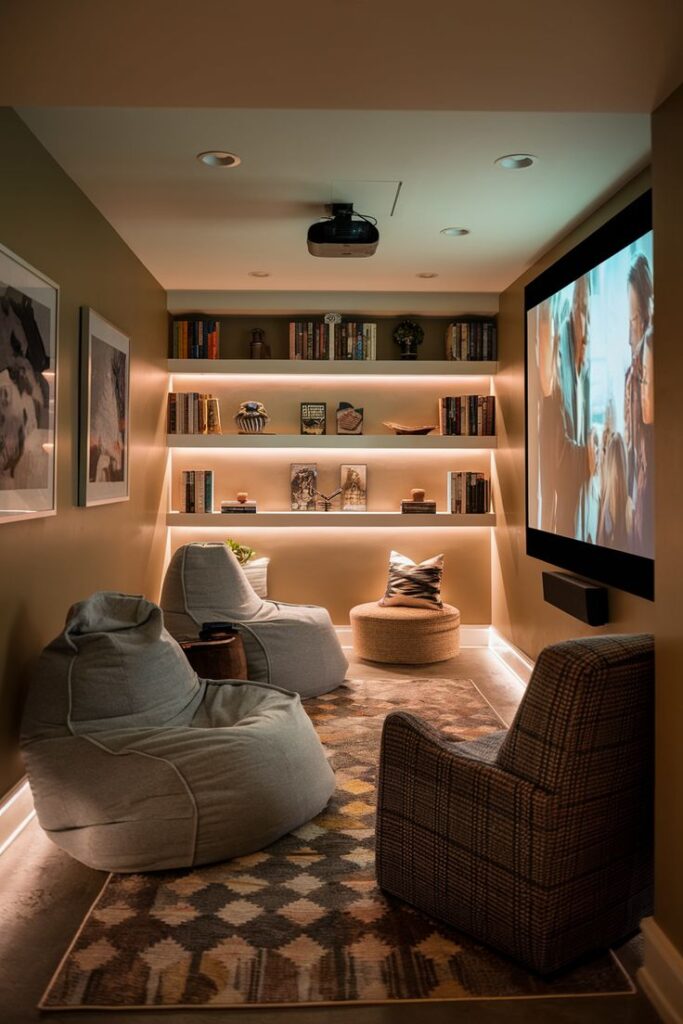
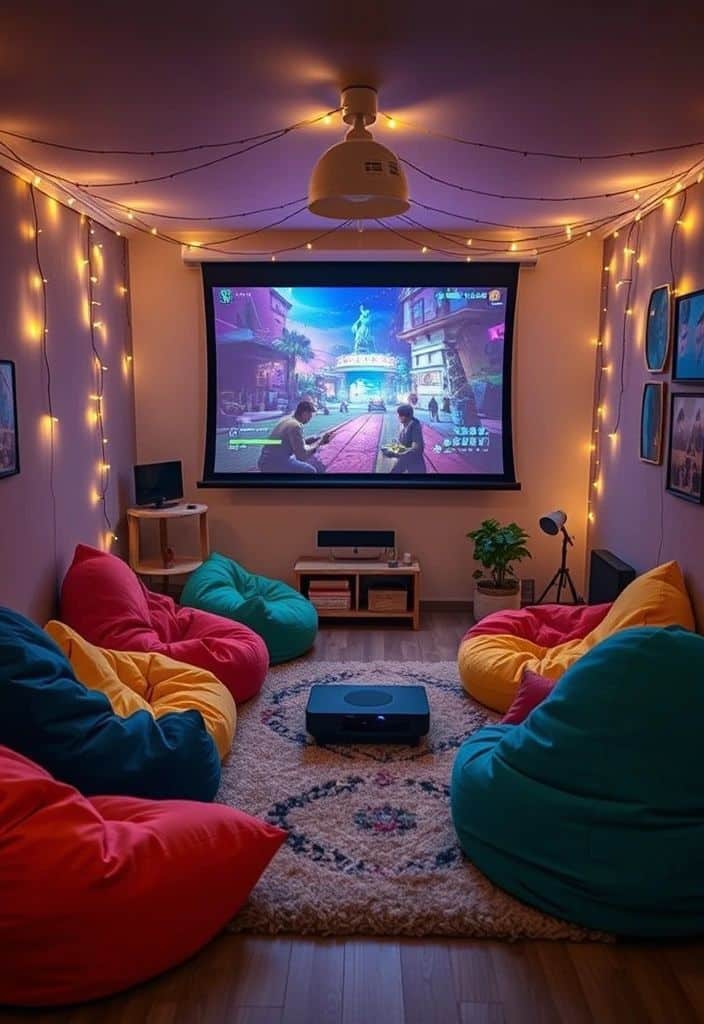
Selecting the Right Display System
Choosing the most suitable display system for your mini home theater depends on space, image quality, and your viewing preferences. Consider the trade-offs between projectors and high-definition TVs, as well as factors such as screen placement, size, and advancing technologies like 4K and HDR.
TVs vs Projectors
A TV offers a bright, sharp image out of the box with minimal setup. Modern high-definition TVs, especially those with 4K resolution and HDR support, deliver vibrant colors, deep contrast, and consistent performance—even in rooms with some ambient light.
Projectors can provide a much larger viewing area compared to TVs, which is ideal if you want a true cinema-like experience. Short throw projectors work in small rooms, letting you position the unit close to your projection screen.
Keep in mind these differences:
| Feature | TV | Projector |
|---|---|---|
| Brightness | High | Lower (room needs darkness) |
| Screen Size Limit | Up to 85″ | 100″+ possible |
| Portability | Moderate | High |
| HDR Support | Yes | Now common, varies |
| Setup Complexity | Low | Moderate |
If your room has lighting you can’t fully control, a TV may be more practical. For darkened spaces and cinematic scale, a projector and projection screen offer strong benefits.
Optimizing Screen Size and Placement
Correct screen size enhances comfort and immersion. For TVs, measure the distance from your seating to the display; a simple guide is to keep the screen size roughly half the viewing distance in inches. For example, if you sit 8 feet away (96 inches), a 42-55 inch TV is appropriate.
Projectors allow for much larger screens, but the throw distance—the space between projector and screen—is vital. Short throw projectors require less distance, making them ideal for compact rooms. Ensure your projection screen fits the available wall space without overwhelming the room.
Place the center of your display at or slightly below eye level when seated. Avoid light sources behind or directly facing the screen to reduce glare and reflections.
Enhancing Picture Quality
For both TVs and projectors, aim for at least 4K resolution if your budget allows, as it produces sharper and more detailed images. HDR (High Dynamic Range) adds richer contrast and more vivid colors, making movies and shows appear more lifelike.
Adjust your display system’s settings for color balance, brightness, and contrast to optimize the picture for the room. Many TVs and high-quality projectors include presets for cinema or movie modes.
A dedicated projection screen enhances image clarity and color reproduction for projectors. For TVs, anti-reflective coatings help maintain picture quality in brighter environments. Always calibrate your display after setup for optimal results.
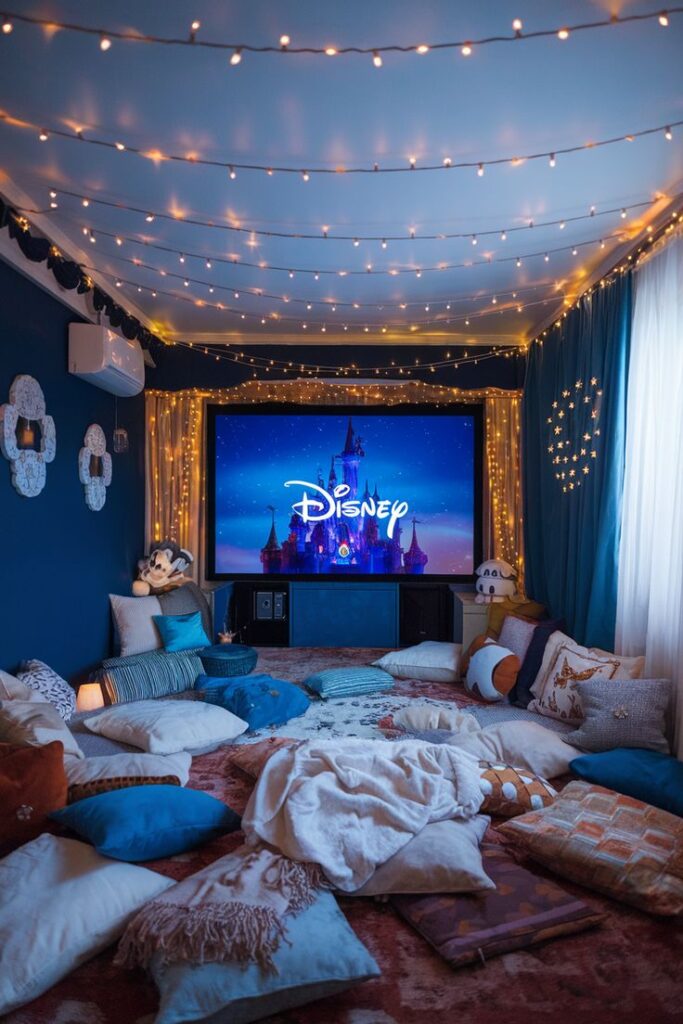

Audio Setup for Mini Home Theaters
Achieving great sound is essential for a satisfying home theater experience. The right audio setup, combined with careful placement and calibration, can make a small space feel more immersive and enjoyable.
Choosing Sound Systems
Selecting the correct sound system for your mini home theater depends on your room size, budget, and listening preferences. 3.1 or 5.1 surround sound systems are popular choices, providing distinct channels for left, right, center, and subwoofer, with 5.1 adding rear speakers for a more enveloping effect.
If space is limited, compact satellite speakers or wireless audio equipment can minimize clutter. Some users prioritize Dolby Atmos compatibility, which adds overhead sound channels and improves immersion. Make sure the audio formats supported by your components match your streaming devices and TV.
Quick Comparison Table:
| System Type | Channels | Best For | Space Needed |
|---|---|---|---|
| Soundbar | 2.0/2.1 | Simplicity/small rooms | Very little |
| 3.1 Surround | 4 | Dialog clarity/compact | Moderate |
| 5.1 Surround | 6 | Full surround/small-med | More flexibility |
Speaker Placement and Calibration
Proper speaker placement is crucial for achieving optimal sound in a small home theater. Position the left and right speakers at ear height and angle them toward your main seating area. The center channel should be just below or above your display, facing straight out.
Rear speakers in a 5.1 surround sound system should be set behind or to the side of your seating position. The subwoofer works best near a wall or a corner but avoid placing it too close to your ears to prevent boomy bass.
Use calibration tools—often built into receivers—to set distance, volume, and delay for each speaker. Many modern receivers include microphones to automatically tune your sound system to the room’s acoustics.
Soundbars vs Surround Sound
Soundbars are space-saving and simple to install, often combining multiple speaker channels in a single device. Modern soundbars may include wireless subwoofers and support for premium audio formats such as Dolby Atmos.
Surround sound systems, whether 3.1 or 5.1, offer discrete speakers for more precise audio positioning and separation. While a soundbar can enhance audio for TV and streaming, a full surround sound system better replicates the cinema experience but typically requires more room and additional wiring.
Consider a soundbar if your space is limited or you want minimal setup complexity. Opt for a full surround setup if you prioritize a more dynamic and directional audio environment.
Improving Sound Quality
Several small changes can noticeably enhance audio quality in a mini home theater. Use thick rugs, curtains, or acoustic panels to limit unwanted echoes and absorb sound reflections. Soft furnishings can help create an optimal sound environment.
If available, enable high-definition audio formats on your streaming device or Blu-ray player. Choose lossless or high-bitrate tracks for music and movies to further improve clarity.
Regularly update your firmware on audio equipment and run recalibration every few months. Simple steps, such as ensuring cables are securely connected and speakers are dust-free, keep your sound system performing at its best.
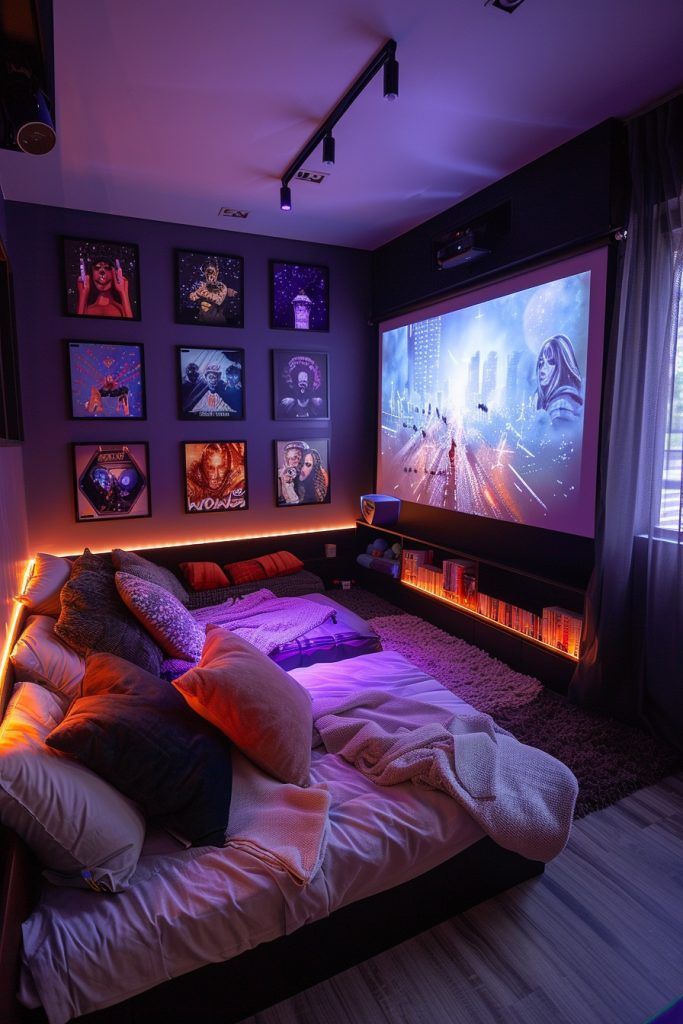
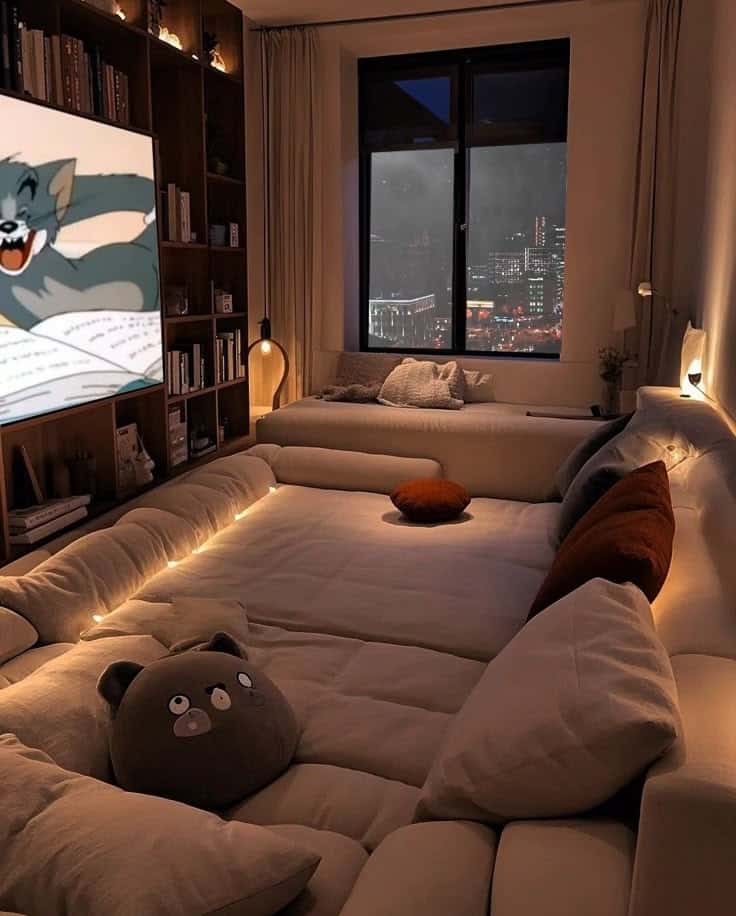
Seating Arrangements and Comfort
Selecting the right seating and arranging it well is essential for making your mini home theater enjoyable. Layout, comfort features, and optimal viewing angles all directly affect your experience.
Maximizing Space for Small Home Theaters
In compact rooms, efficient use of space is crucial. Start with a scaled floorplan to measure available dimensions for seating and walkways. Avoid overfilling the room—a few well-chosen seats are usually better than crowding every inch.
Consider a single sofa, a sectional, or a few chairs rather than bulky setups. Place seats so each one has a clear view of the screen, and leave enough space for easy movement. Wall-mounted screens and slim-profile furniture increase usable area.
Listing the basics:
- Leave at least 24 inches of aisle space
- Prioritize direct site lines to the screen
- Avoid placing large seats against every wall
Small risers or staggered seat rows (when space allows) can help everyone get a good view, even in narrow rooms.
Selecting Home Theater Seating Options
Choosing home theater seating comes down to balancing comfort, style, and footprint. Recliners are popular for their ability to provide individualized comfort without needing extra ottomans or footrests.
Compact recliners or small-scale theater chairs fit best in limited spaces. Modular seating systems allow you to customize layout and accommodate changing needs. Loveseats or small sofas work well for two-person setups or family viewing.
Popular choices:
| Seating Type | Pros | Space Needed |
|---|---|---|
| Compact recliner | Maximum comfort, small size | Moderate |
| Modular seats | Flexible, customizable | Variable |
| Loveseat | Great for couples, compact | Small |
| Bench sofa | Seats several, minimal bulk | Medium |
Look for added features like cup holders, arm storage, or built-in lighting to enhance comfort further.
Arranging Recliners and Comfortable Seating
Arrange seats so each viewer faces the screen directly, minimizing uncomfortable viewing angles. Stagger recliners or use curved rows to keep sight lines clear and prevent blocked views.
Leave enough space behind recliners for the footrests to extend fully. For tighter rooms, choose wall-hugger or zero-clearance recliners that require little space to recline.
If using multiple types of seating, place recliners or premium seats in the center for the best view, with sofas or ottomans at the sides. Group seats together for conversation, but ensure each seat has a direct view of the display. Adjustable recliner angles give everyone a comfortable, customized setup.
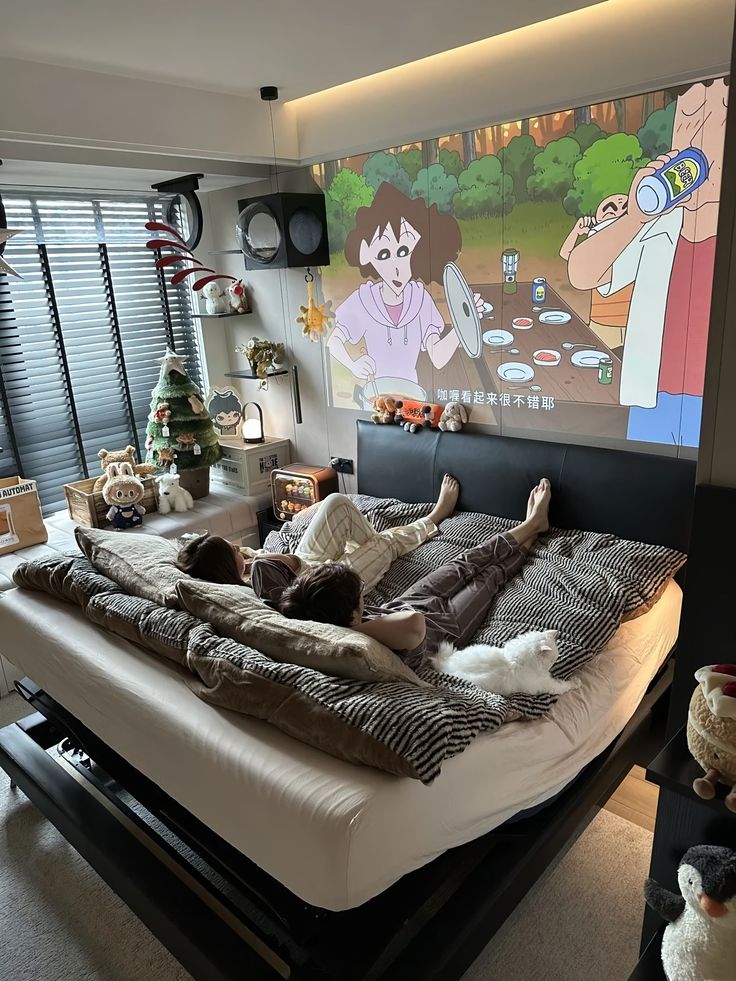
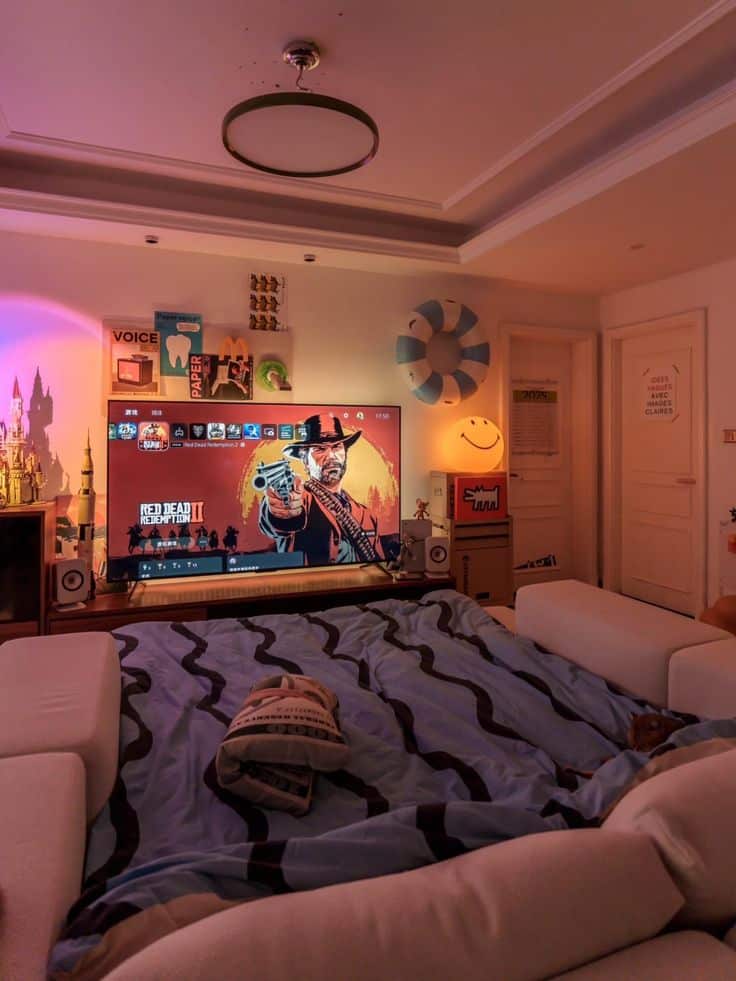
Optimizing Acoustics and Lighting
Proper acoustics and lighting are essential for achieving a comfortable and immersive mini home theater. Focusing on these details will help create a space where both sound and visuals reach their full potential.
Acoustic Panels and Treatments
Acoustics directly affect your ability to hear dialogue, effects, and music clearly. Bare walls often reflect sound, causing distortion or echoes, especially in smaller rooms.
Adding acoustic panels absorbs these unwanted reflections. Panels can be placed on walls, ceilings, and even in room corners. For budget-friendly treatment, thick curtains or bookshelves lined with books can also help break up and absorb sound.
Place panels at the first reflection points—these are spots where sound from the speakers first hits the wall before reaching your ears. Use a simple mirror test: sit at your main seat and have someone move a mirror along the wall; where you see a speaker in the mirror, place a panel there.
Bass traps in corners further reduce muddiness by controlling low frequencies. Pay attention to symmetry for balanced sound, and avoid hard, flat surfaces when possible.
Smart Lighting and Ambient Solutions
Smart lighting lets you customize your theater’s ambiance with ease. Using dimmable smart bulbs or LED strip lights helps prevent glare while making it easy to set the mood for different types of viewing. Adjust brightness and color temperature with an app or voice command using platforms like Philips Hue or LIFX.
Ambient lighting, such as bias lighting behind the screen or under seating, reduces eye strain during long movies. Placement matters: aim for indirect light that does not reflect on the screen. LED strip lights under shelving or along walls are an effective, customizable option.
For flexibility, consider scenes or schedules for your smart lighting system. This way, you can switch between movie night, gaming, or casual viewing instantly.
Using Blackout Curtains and Dimmable Lighting
Blackout curtains block outside light and reduce glare, letting you watch even in bright daylight. Thick, layered curtains may also help absorb some sound, contributing to better acoustics in your room.
Combine blackout curtains with dimmable lighting for precise control over your environment. Install dimmer switches or smart dimmable bulbs to gently lower the lights before your movie begins.
Keep lighting sources behind or to the sides of your seating to minimize distraction and keep reflections off the screen. This allows for a theater-like atmosphere without complicated electrical work.
A simple table for lighting solutions:
| Feature | Benefit |
|---|---|
| Dimmer switches | Easy brightness control |
| Blackout curtains | Block external light |
| LED strip lights | Customizable ambiance |
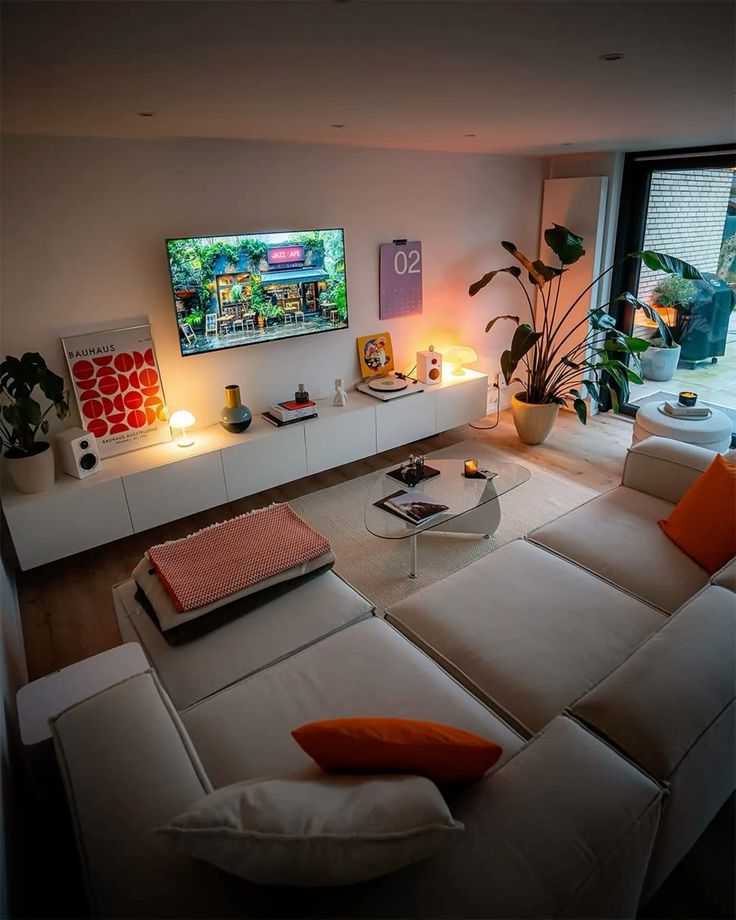
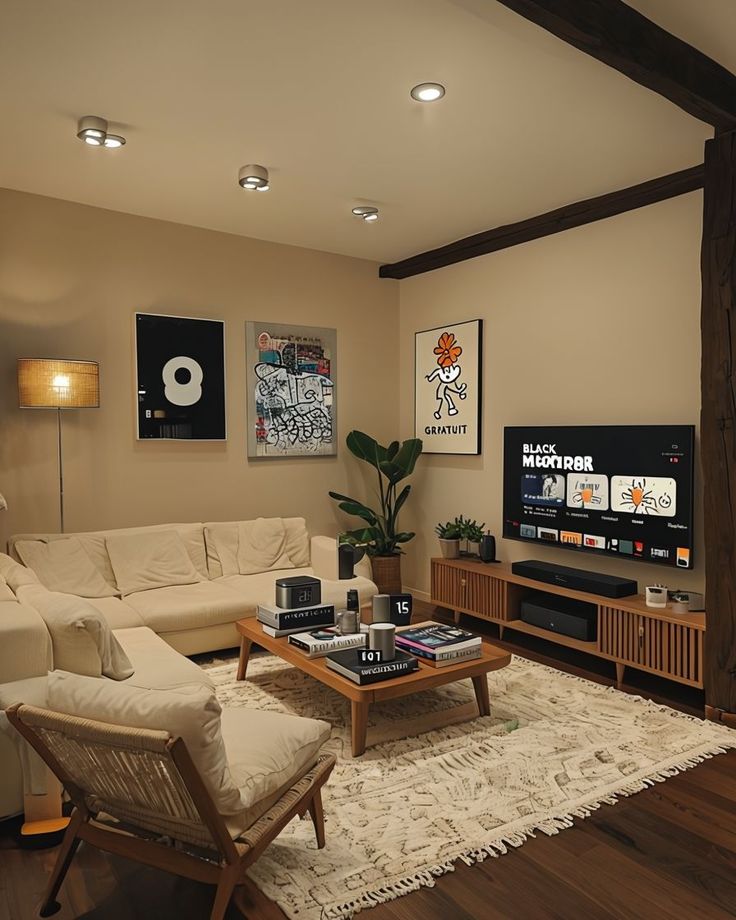
Creative Design and Accessories
Designing a mini home theater involves more than choosing screens and speakers. Attention to cable management, themed decor, and modern entertainment enhancements creates a dedicated space for enjoyable movie nights and a seamless cinema experience.
Cable Management and Storage Solutions
Maintaining a clean, clutter-free setup is essential for both safety and aesthetics. Use cable raceways, wire sleeves, or adhesive clips to keep wires from audiovisual equipment organized and hidden. Label each cable for quick troubleshooting when rearranging devices or upgrading technology.
Invest in compact storage solutions, like custom cabinets and portable shelving units. These can house Blu-ray discs, remote controls, and streaming devices. Small furniture with built-in storage, such as ottomans or side tables, provide extra space for snacks and accessories without crowding your mini theater.
Concealing power strips and surge protectors behind consoles or within furniture enhances the tidy look. A simple table lists practical options:
| Solution | Benefit |
|---|---|
| Cable trays | Prevents tangling |
| Wall-mounted shelves | Saves floor space |
| Media cabinets | Secures electronics & movies |
Integrating Movie-Themed Decor
Bringing movie magic into your space starts with the right themed decor. Hang framed movie posters or canvas prints related to your favorite films. Accent the room with collectible figurines, themed cushions, or a marquee-style sign above the screen.
Consider a small snack bar complete with a compact popcorn machine and drink station. Use tiered storage or portable snack carts if floor space is limited. Low-light sconce lighting or LED light strips along the baseboards add ambiance without causing glare on the screen.
Darker wall colors or blackout curtains help create a true cinematic environment. Choose single-color palettes or vintage theater accents to reinforce the immersive atmosphere for your home entertainment setup.
Home Theater Enhancements and Streaming Devices
Smart streaming devices are central to a modern immersive home theater. Devices like Roku, Apple TV, Chromecast, or Fire TV enable access to multiple platforms and support voice control for convenience. Ensure your chosen device supports the audio and video outputs required by your audiovisual equipment.
Smart home integration, such as linking streaming devices to a virtual assistant, lets you adjust lighting, play movies, or control volume hands-free. Use universal remote controls or mobile apps for seamless management of all connected components. Add wireless speakers or subwoofers if space allows, enhancing sound without extra visible wires.
Regularly update device software to maintain security and unlock new features. Quick-access charging stations or wall-mounted holders for remotes help keep everything organized and ready for movie nights.
- 1.0Kshares
- Facebook0
- Pinterest1.0K
- Twitter0



